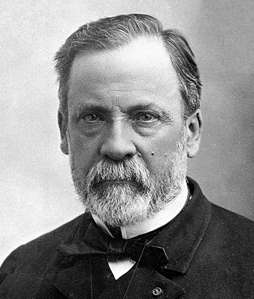5.1 Heat transfer coefficient: exercise 2 (example)
Course subject(s)
5 Newton’s law of cooling
PASTEURIZATION
About 600,000,000 tons of milk is consumed on a yearly basis worldwide, equivalent to more than 100 kilograms of milk per person per year. 90 Percent of all the milk that is consumed is produced by cows. All of this milk has to be processed by a heat treatment, resulting in the milk being less likely to cause illness and it being able to be stored for a longer period of time. This heat treatment process, which kills a lot of the bacteria but does not affect the taste significantly, was discovered by the French chemist Louis Pasteur. The process is therefore named after this great scientist: Pasteurization. The process is carried out as follows: the milk is briefly heated to 72 degrees Celsius, and then cooled to 4 degrees Celsius, and then packed.

In this exercise, we are pasteurizing milk in a batch process. The milk (Cp = 3.8 KJ/kgK, ρ = 9.5*102) is put into a cylindrical vessel that is 0.44 meters in diameter and 0.68 meters in height. The milk inside the vessel is perfectly mixed at all times and you may assume that the heat capacity of the milk does not change with temperature.
The milk is put in the vessel at room temperature (25 degrees Celsius) and is heated by flowing steam along its surface (300 degrees Celsius). The overall heat transfer coefficient, U = 75 W/m2K.
Make a sketch of this situation!

The Basics of transport phenomena by TU Delft OpenCourseWare is licensed under a Creative Commons Attribution-NonCommercial-ShareAlike 4.0 International License.
Based on a work at https://ocw.tudelft.nl/courses/basics-transport-phenomena/.



